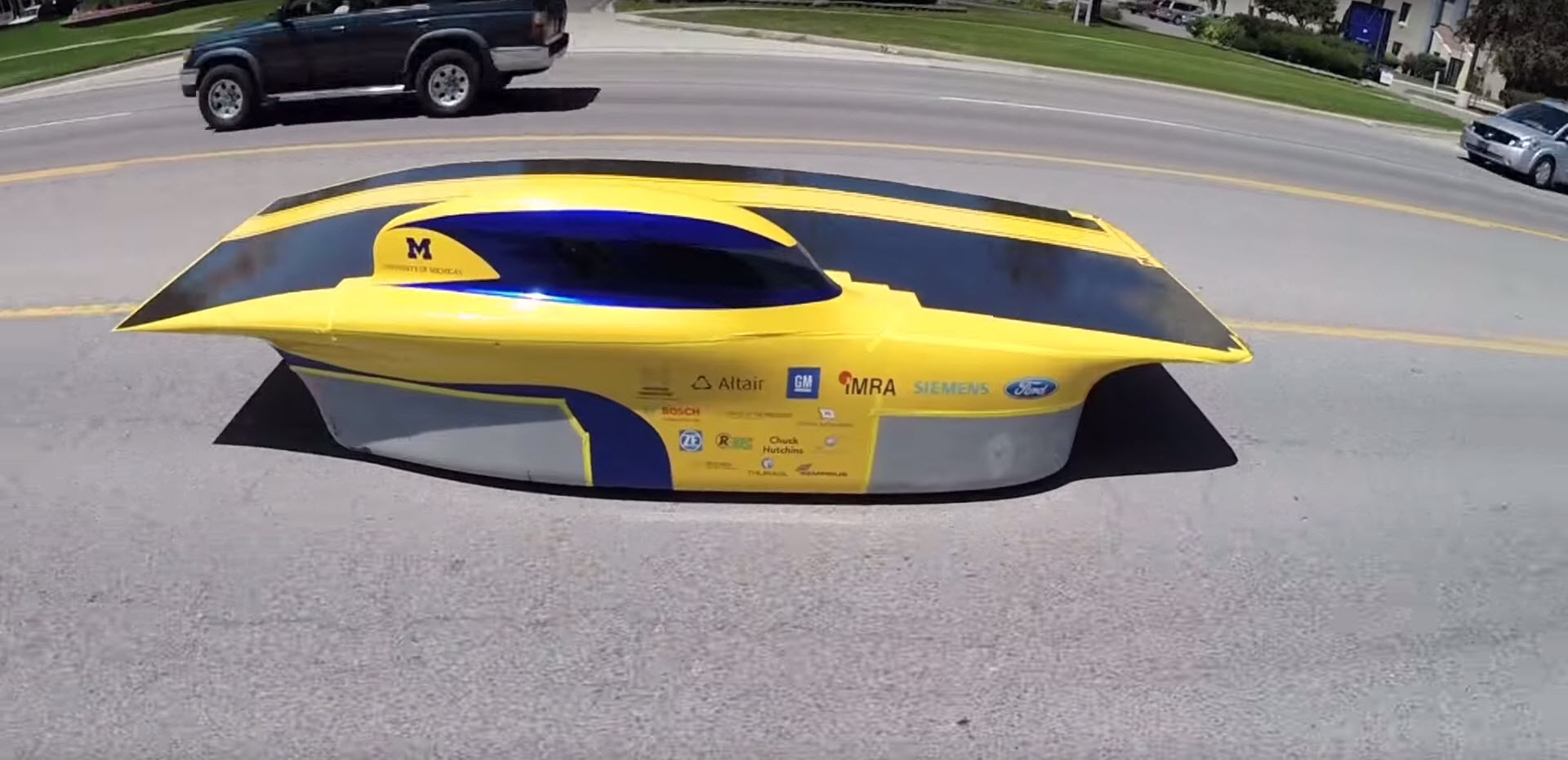Race for the Gold: How University of Michigan Improved Solar Car with Simulation in NX CAE


This is the scenario a team of students from the University of Michigan will face, along with 45 other solar car teams from around the world, in just a few weeks’ time at the World Solar Challenge.
The race begins in Darwin, Australia. Teams must recover kinetic energy from their vehicles or get power from the sun in order to complete the trek down Stuart Highway to Adelaide. It will be tough, but according to the website (and those who have participated in the past) it is an adventure of a lifetime.
The Michigan solar team has come a long way to get here, and not just in miles they will physically travel to reach Australia and the race’s end. They have worked to improve the solar car—dubbed Aurum after the Latin word for gold—with respect to speed, performance, and the compeititon.
“We don’t just settle on what we’ve done,” business lead Edina Lee said. “We make sure we’re ahead of the curve. If someone throws something new out there, we’re always saying why did they do that? What can we do next to top that?”
This attitude is what led Michigan to the car they have today. Well, that and simulation. They put a greater emphasis on analysis this year than those of the past. “Everything mechanical in the car is analyzed,” mechanical lead Josh Agby said. “This includes mechanical systems in the car, front suspension, rear suspension, brakes and steering.”
Analysis helps ensure all parts of the vehicle are safe and reliable. After all, the team will be on its own for the 8-day duration of the World Solar Challenge. It’s not just about safety, though that is a primary concern. Performance of the car is obviously a huge factor when it comes to their success.
The team managed to improve simulation of the six-meter solar array with the use of NX CAE, modeling each part individually to account for weight, cell area, and cell direction. This has helped them reduce weight, increase speed and efficiency, and ultimately make what they consider to be a winning car.

Driving a solar car takes some getting used to. From behind the wheel, the driver can see the the entire length of the car to the front. Because of this, the team flew down to Australia prior to the contest to get in about a month’s worth of training in the Outback terrain. It helps to test the car, but also to test the team. They will be relying on each other to get through the race successfully, and as the old adage goes, practice makes perfect.
The team used not only NX CAE, but CAD and CAM as well, along with Teamcenter to manage data. You can hear their full story when you watch the video below.



